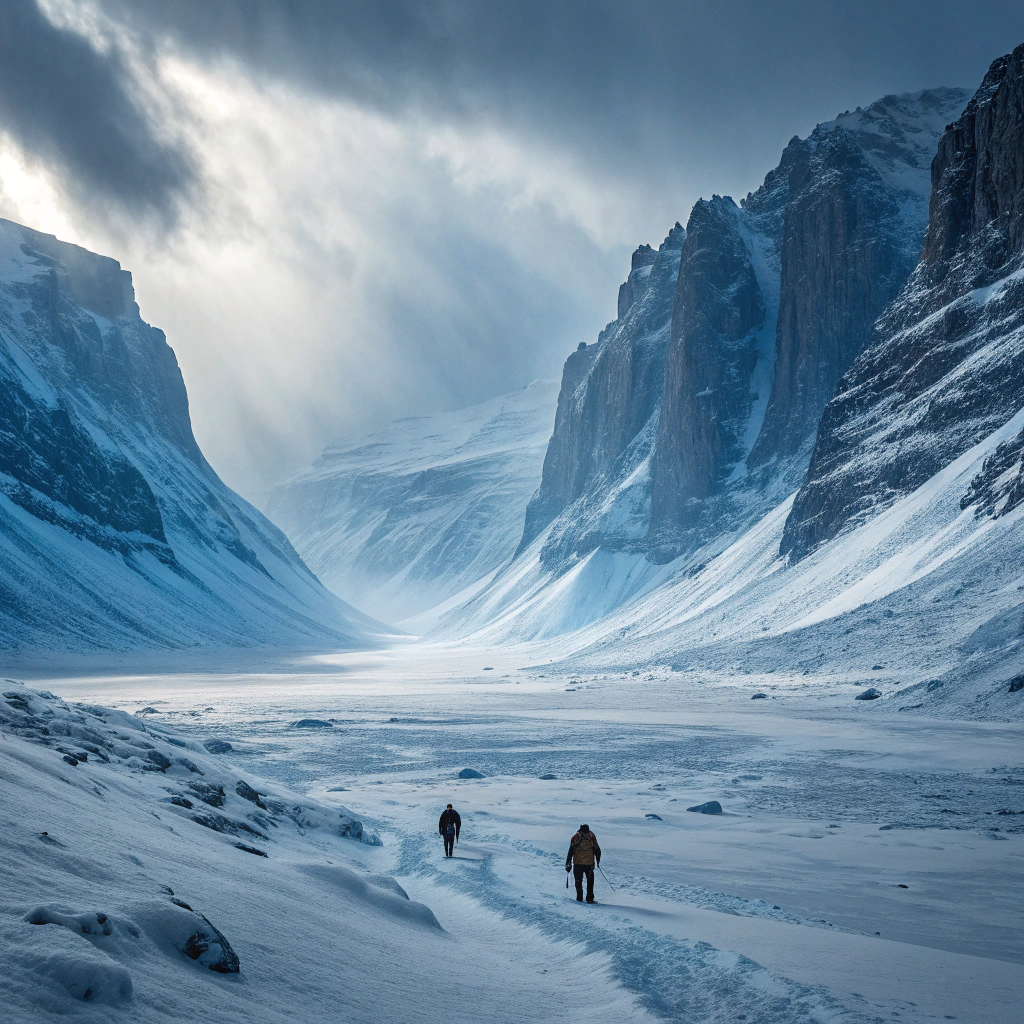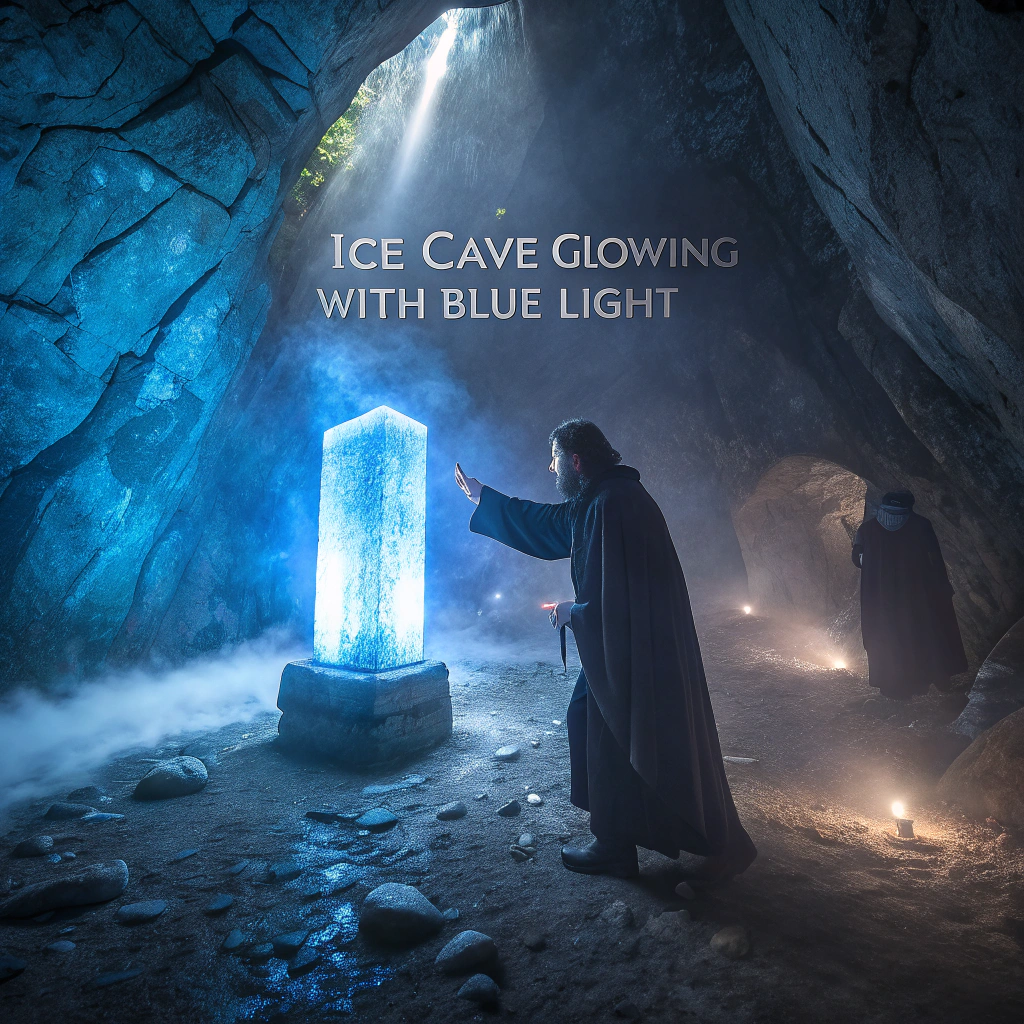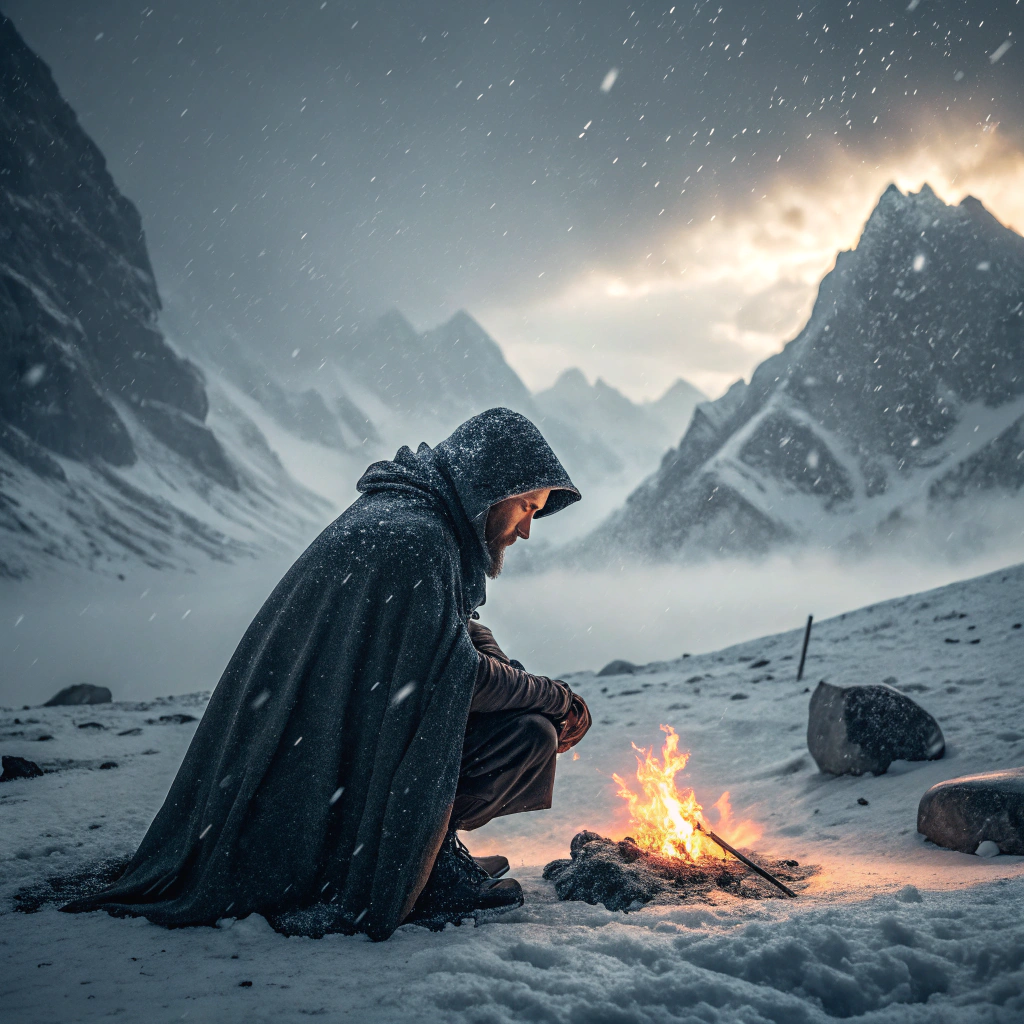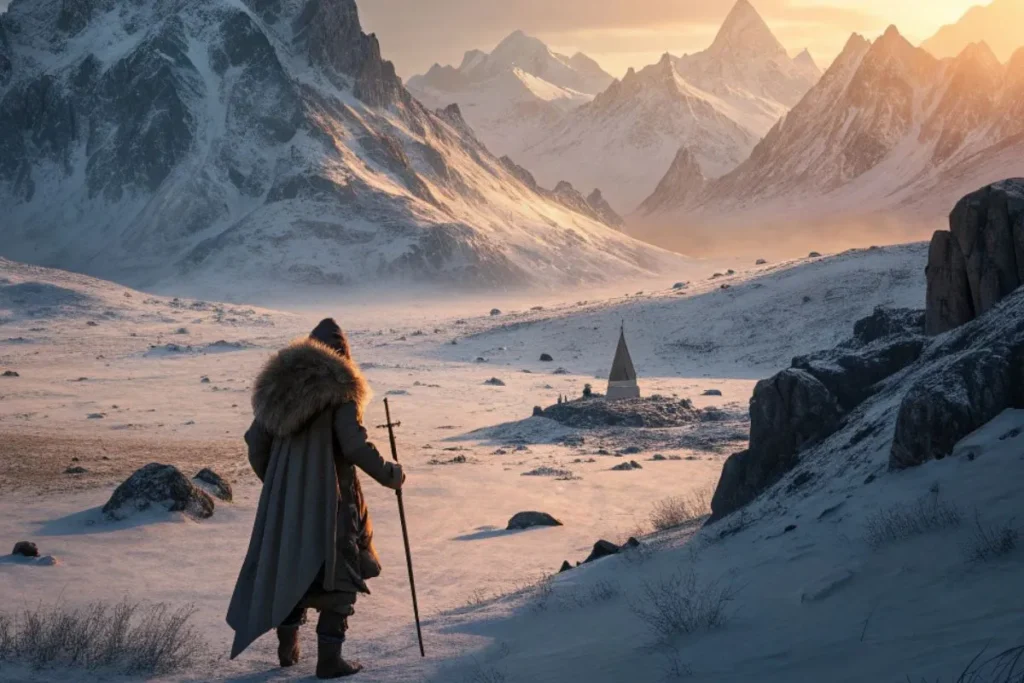- Introduction: The Magic of the Frozen World
- The Allure of the Frozen Frontier
- Myth and Symbolism in Frozen Realms
- The Psychological Power of Cold
- Building Frozen Worlds in Fantasy
- Ice, Memory, and the Passage of Time
- The Role of Magic in Frozen Settings
- Cold as a Character: The Environment Fights Back
- Why Frozen Landscapes Endure in Fantasy
- Conclusion: The Eternal Winter and the Human Heart
Introduction: The Magic of the Frozen World
From the icy peaks of the North to the shimmering glaciers of the South, frozen landscapes have long fascinated writers, filmmakers, and gamers alike. In fantasy literature and media, these frostbitten realms are more than mere backdrops — they are catalysts for epic journeys, trials of endurance, and reflections of the human soul.
Frozen worlds embody both beauty and danger. Their silence speaks of ancient secrets, their storms of forgotten gods, and their endless expanses of white symbolize isolation, purity, and rebirth. Whether in Tolkien’s The Silmarillion, George R.R. Martin’s A Song of Ice and Fire, or video games like Skyrim, the cold never merely exists; it breathes, shapes, and transforms everything within it.
In this article, we’ll explore how frozen landscapes shape the best fantasy adventures, influencing not only setting and mood but also character development, mythology, and storytelling structure. These glacial worlds become metaphors for resilience, the unknown, and the eternal conflict between fire and ice — both literal and symbolic.
The Allure of the Frozen Frontier

A Canvas of Isolation and Mystery
Frozen landscapes create natural frontiers. They are remote, often uninhabitable, and largely unexplored — a perfect setting for fantasy narratives. Unlike lush forests or sunny kingdoms, ice-bound worlds feel alien, untamed, and almost sentient. Their vast emptiness magnifies every human action, emphasizing survival and self-discovery.
In fantasy stories, isolation serves a narrative function. The protagonist is cut off from civilization, forced to confront not only external threats but internal fears. The silence of the snowfield can amplify introspection, while the blinding white void becomes a metaphor for the unknown depths of the mind.
Writers use these barren landscapes to test their heroes — to strip away the comforts of civilization until only strength, ingenuity, and will remain. The frozen frontier becomes a crucible of transformation.
The Beauty of Ice and Light
Visually, frozen worlds are some of the most breathtaking in fantasy. The interplay of light and ice gives storytellers a palette of reflection, brilliance, and contrast. Snow captures light like a gemstone; glaciers glow with hidden blues; auroras dance across the heavens like ethereal spirits.
These details breathe life into world-building. Readers and viewers are transported into scenes that feel both otherworldly and real. The cold, instead of being lifeless, becomes alive — sculpting landscapes, freezing time, and preserving the past beneath layers of ancient frost.
Myth and Symbolism in Frozen Realms

Ice as a Symbol of Stasis and Eternity
In mythology and symbolism, ice often represents stillness, death, and timelessness. In fantasy worlds, it frequently guards something ancient — a frozen god, a sealed kingdom, or a weapon of unimaginable power. The frozen realm becomes a time capsule, holding the remnants of civilizations long gone.
This concept resonates deeply in stories like The Chronicles of Narnia, where the White Witch’s eternal winter symbolizes oppression and stagnation. The thaw, then, represents freedom, rebirth, and the return of hope.
The Duality of Fire and Ice
Few symbols are as universal in fantasy as the conflict between fire and ice. Fire represents passion, chaos, and life, while ice embodies control, preservation, and death. Together, they form a balance — a cycle of creation and destruction.
In George R.R. Martin’s A Song of Ice and Fire, this duality defines the entire world. Dragons, born of fire, battle the undead from the frozen North. This elemental opposition shapes the moral and physical landscape of the story, giving the cold both literal and symbolic weight.
Frozen Gods and Ancient Spirits
Frozen settings often harbor powerful entities: sleeping gods, ice spirits, and guardians of forgotten realms. These beings represent forces beyond human comprehension — timeless, indifferent, and bound to nature’s cold laws.
In many fantasy myths, the frozen North or South becomes a threshold between the mortal world and the divine. Heroes who venture there often undergo spiritual transformation or face trials that redefine their existence. The frozen landscape thus becomes a bridge between the human and the cosmic.
The Psychological Power of Cold

Survival as a Story Catalyst
The cold strips life to its essentials. Food, warmth, and shelter become luxuries. This survival-driven storytelling forces characters to adapt, evolve, and reveal their truest selves. When faced with blizzards, frostbite, and isolation, masks fall away — revealing courage, fear, and the instinct to endure.
Fantasy adventures set in frozen worlds use this to heighten tension. Every step across the ice feels perilous. A sudden snowstorm can erase trails, destroy plans, or separate allies. The environment itself becomes the antagonist, demanding constant vigilance.
The Loneliness of the White Wasteland
There’s a haunting loneliness in frozen realms — the vast silence of snowfields, the endless white horizon. This solitude mirrors the human condition: our search for meaning in a vast, indifferent universe.
Writers often use cold environments to explore mental endurance and emotional vulnerability. In these desolate places, characters confront not only the dangers of nature but also their inner demons. The ice mirrors the human soul — beautiful, fragile, and perilously close to cracking.
Transformation Through Hardship
Frozen landscapes are transformative spaces. Characters who enter them rarely leave unchanged. Whether they find enlightenment, madness, or death, the experience of enduring the cold reshapes them.
In many myths and novels, the frozen journey is a rite of passage — a symbolic death and rebirth. Emerging from the frost signifies strength, wisdom, or spiritual awakening. It’s no coincidence that so many heroes return from the cold bearing new powers or deeper understanding.
Building Frozen Worlds in Fantasy
Crafting Authentic Icebound Settings
Creating a believable frozen world requires more than describing snow. The best fantasy writers understand how ecosystems, cultures, and architecture adapt to the cold. Villages might be built from ice and stone, lit by whale oil lamps. Clothing would be fur-lined, travel done by sled or magic-resistant beasts.
Climate affects everything — trade, warfare, religion, and art. A people who live under eternal frost might worship deities of warmth or ice; their songs might celebrate survival rather than victory. The harshness of their environment shapes their entire identity.
Balancing Beauty and Brutality
A good frozen setting is both deadly and alluring. The danger of frostbite or thin ice contrasts with the ethereal beauty of snowflakes and auroras. This balance keeps readers engaged — torn between awe and dread.
Fantasy worlds thrive on contrast. When beauty and danger coexist, the landscape becomes a character in itself. The reader feels the bite of the wind, hears the crunch of snow, and senses the stillness of ancient glaciers.
Examples from Literature and Film
Many of the greatest fantasy worlds owe their power to icy settings:
- Tolkien’s Middle-earth: The northern wastelands of Angband and Forodwaith are filled with ancient evil and desolation.
- Narnia: The White Witch’s endless winter sets the tone for a tale of faith, sacrifice, and renewal.
- Game of Thrones: The Wall and the lands beyond it embody fear, isolation, and the looming threat of the supernatural.
- Frozen (Disney): While lighter in tone, it explores themes of control, emotion, and the power of acceptance within a frozen metaphor.
- The Witcher: The frost-covered Skellige Isles and White Frost prophecy echo humanity’s fight against destiny and extinction.
Each of these examples uses cold not as a backdrop, but as an active narrative force.
Ice, Memory, and the Passage of Time
The Preservation of the Past
Ice is a natural preserver. In fantasy, glaciers often entomb lost cities, ancient beasts, or forgotten histories. They serve as metaphors for memory — the past frozen in time, waiting to be rediscovered.
This motif allows storytellers to weave in elements of archaeology, mystery, and destiny. Heroes who uncover what lies beneath the ice often awaken both knowledge and danger. The past, once thawed, demands to be reckoned with.
The Weight of Forgotten Ages
Frozen landscapes often feel timeless, untouched by progress or decay. This stillness evokes awe and melancholy — the sense that time itself has stopped. The snow buries the remnants of empires, leaving only whispers of what once was.
In fantasy, this can represent humanity’s insignificance in the face of eternity. The frozen world becomes a mirror to cosmic indifference — yet within that vastness, human courage shines even brighter.
The Role of Magic in Frozen Settings
Elemental Magic and the Power of Ice
Magic in icy worlds is often elemental — drawn from frost, blizzards, and the slow strength of glaciers. Ice magic symbolizes control, clarity, and endurance, while also embodying danger.
Such power is often portrayed as difficult to master, demanding both emotional restraint and immense discipline. Characters who wield frost magic risk being consumed by its cold logic or detached from human warmth — a metaphor for the balance between power and empathy.
The Mysticism of the North and the Unknown
In many fantasy traditions, the far North or South represents the “edge of the world” — a place where magic is strongest, where reality thins, and the divine or demonic seeps through. The frozen frontier becomes a spiritual threshold, a liminal zone between worlds.
From Norse myths of Jotunheim to modern tales of icebound fortresses, these regions symbolize humanity’s confrontation with the infinite. To travel there is to face one’s limits — physical, moral, and metaphysical.
Cold as a Character: The Environment Fights Back
The Frozen World as an Active Force
Unlike temperate settings, frozen landscapes fight back. They are alive — shifting, cracking, blinding, consuming. In fantasy adventures, nature itself becomes an adversary. A sudden avalanche can change fate; a frozen river can betray trust; an unexpected thaw can reveal horrors long buried.
This gives writers and creators an organic source of tension. The environment isn’t static; it reacts. It punishes hubris and rewards humility. It tests heroes and devours the unworthy.
The Morality of the Ice
There is an impartial justice in frozen worlds. The cold doesn’t discriminate; it kills the cruel and kind alike. This neutrality can serve as a philosophical backdrop — a reminder of nature’s indifference and the futility of human arrogance.
Yet within this indifference lies a lesson. Heroes who respect the cold, who move with it rather than against it, often find wisdom or salvation. In fantasy, the cold teaches humility — the greatest virtue of all.
Why Frozen Landscapes Endure in Fantasy
Universality of Struggle and Survival
Every human understands cold. It’s a primal experience — a reminder of vulnerability and mortality. This universality makes frozen settings emotionally resonant. Readers can feel the bite of the wind and the fear of the endless night.
Survival in such places mirrors real human endurance. It celebrates resilience, resourcefulness, and the unbreakable spirit. Frozen adventures remind us that warmth — physical and emotional — must be earned.
Emotional and Symbolic Depth
Frozen settings evoke more than danger; they evoke introspection. The cold quiets the world, allowing characters and audiences alike to listen inward. The struggle against nature becomes a mirror for the struggle within.
That is why frozen landscapes produce some of fantasy’s most emotionally powerful stories. Beneath the ice lies not just danger, but revelation.
Conclusion: The Eternal Winter and the Human Heart
Frozen landscapes in fantasy are more than a setting — they are symbols of endurance, reflection, and the eternal balance between beauty and death. They shape the greatest adventures by testing heroes in ways no other environment can.
To cross the ice is to confront the unknown. To survive it is to be reborn. From the frostbitten mountains of Middle-earth to the glittering palaces of icebound kingdoms, these worlds remind us that warmth has meaning only because of the cold.
The frozen realm will always call to storytellers and dreamers. It is the edge of the map, the whisper of ancient gods, and the mirror of the soul. In the silence of the snow, we find both terror and transcendence — proof that even in the coldest places, imagination burns brightest.
